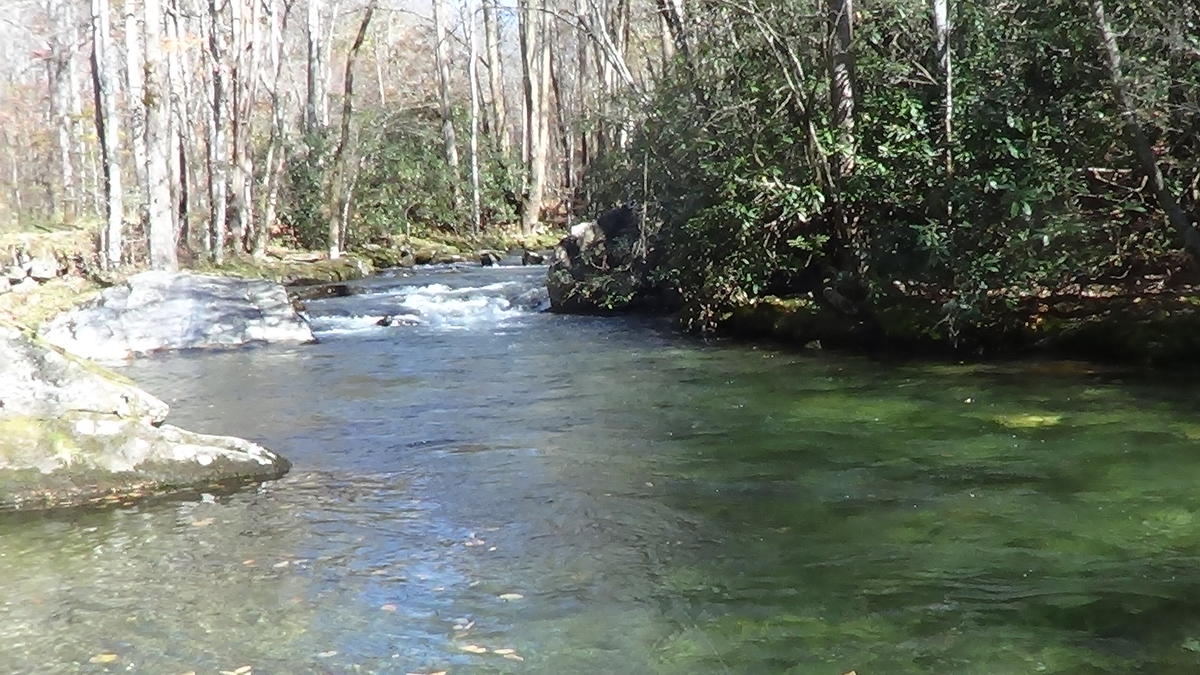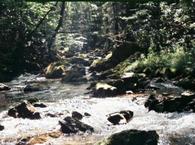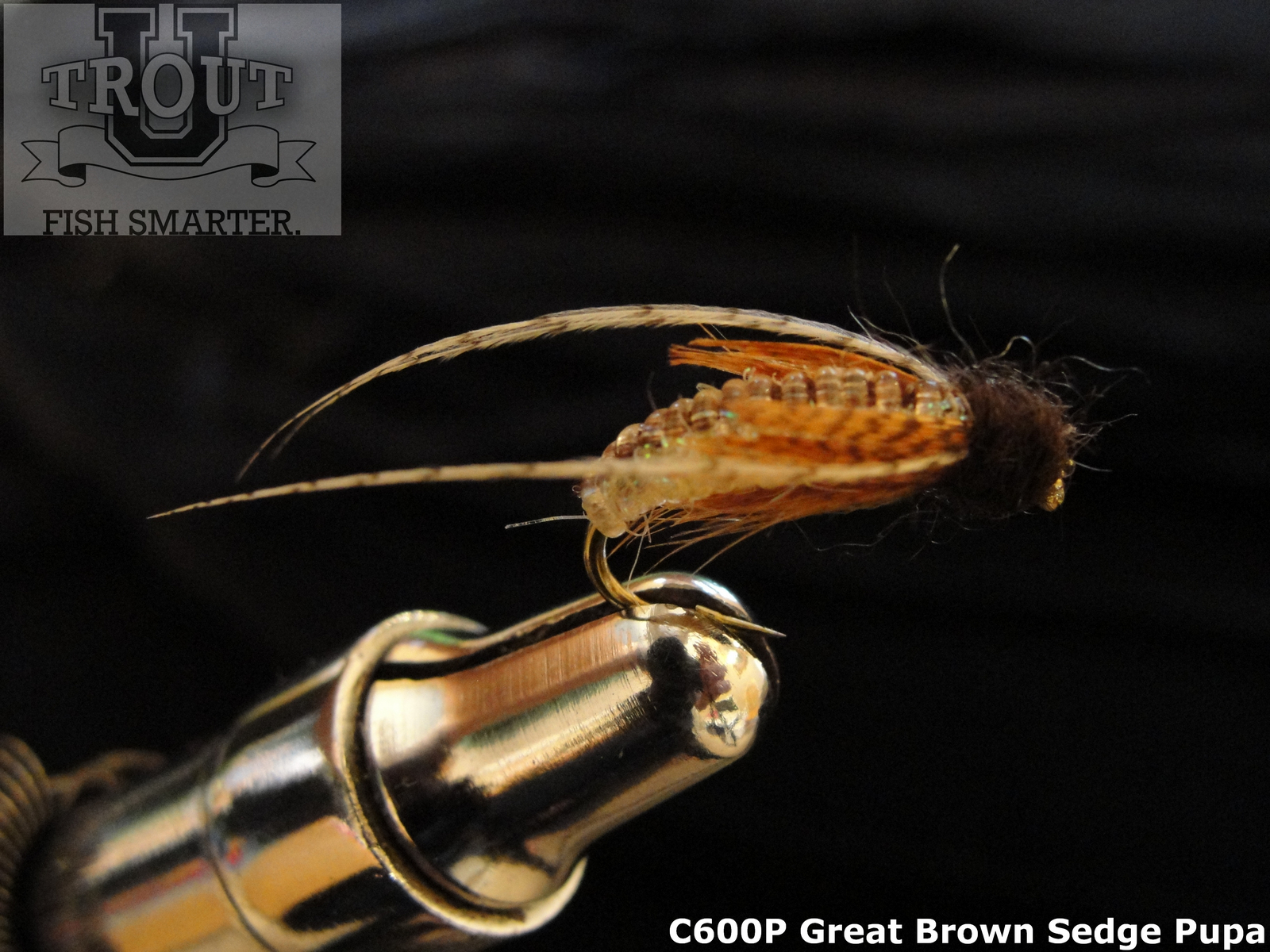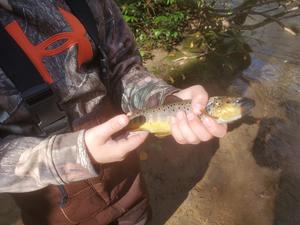
I've found that late fall is becoming one of my favorite times of the year to fish the Smokies. I consider late fall to be from the first of November until the winter solstice. While the trout fishing in late fall may not provide the largest number of fish, I've found that fishing this time of year offers decent fishing with some additional benefits.
First, the trout fishing holds up quite well in the late fall. Fly fishermen will find enough insect activity to make it interesting, and those fishing heavy artillery have a good chance at catching a large brown trout this time of year.
Second, the fishing pressure has diminished considerably. To be sure, a warm day in early November may find a few die hards still on the stream, but nothing like earlier in the year. And, by late November, I don't usually encounter other fishermen. There's something about the quiet of this time of year I find alluring, though there may still be a fair amount of sightseers driving around the more popular areas.
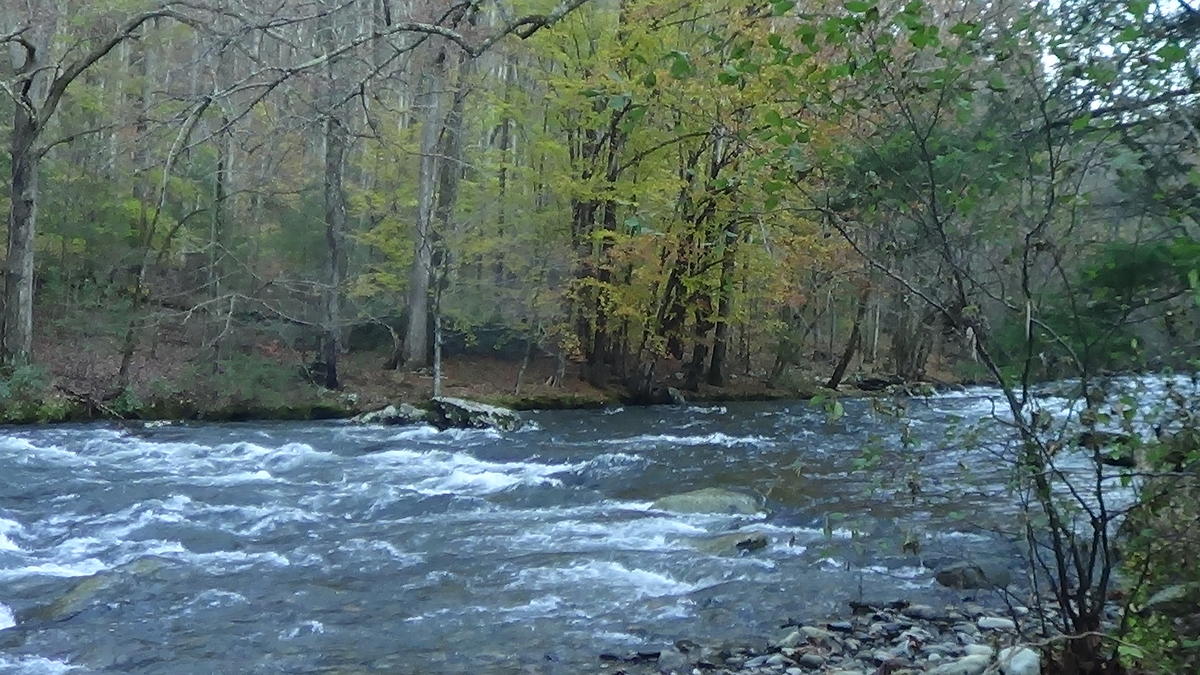
Third, whether by good fortune or an actual weather pattern, the weather has been relatively warm the days I've been on the stream in recent years. I've actually had good days of fishing in sub-freezing weather, but I don't really enjoy fishing trips as much when the bottled drinking water freezes while on my person.
Fourth, the wildlife in the Smokies has been quite accommodative. I've seen bears on two occasions in the last few years; wild turkeys make an appearance nearly every time. Deer are prevalent, often with impressive racks. One Coyote dashed across the road near our vehicle, and thanks to a seemingly successful reintroduction by the Park Service, we saw 45 elk near the Oconaluftee Visitor Center just a couple of weeks ago.
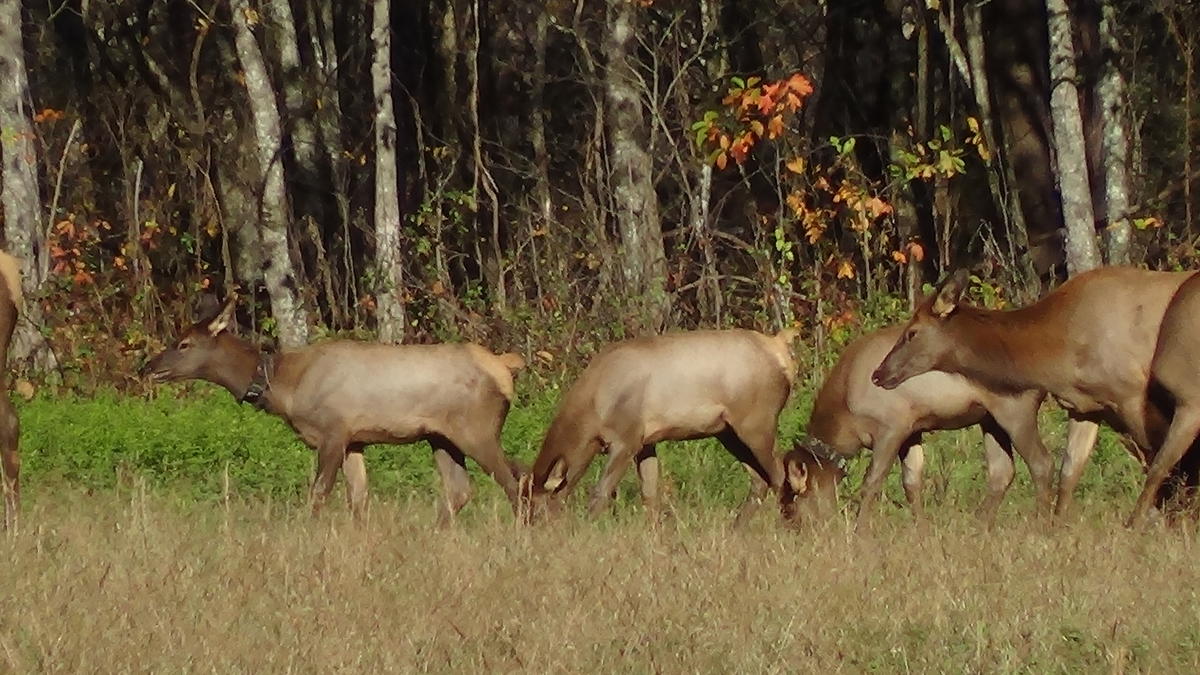
Here are a few tips for trout fishing the Smokies in the late fall:
Plan your attack. Determine which streams you want to fish, and how you will get there. My favorites include the Oconaluftee River and some of its tributaries on the NC side, and the Little River system and AnthonyCreek/Abrams Creek above and below Cades Cove. Deep Creek is a perennial backcountry favorite for those wanting to get away from it all.
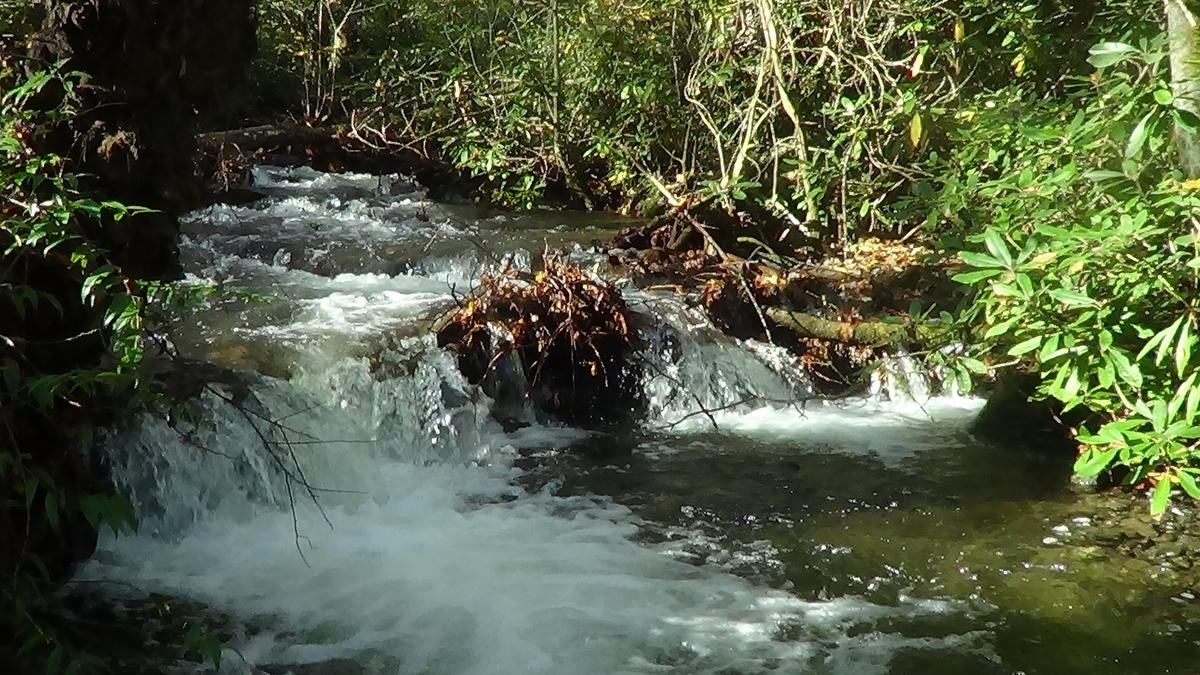
Bring the right flies and lures. Check out our Great Smoky Mountains National Park hatch chart to determine which flies to take. Then, check out the flies in our online store to purchase what you need, as well as to find detailed information on how to fish them.
If you're after big browns, you'll want streamers or lures. Also, you will primarily be fishing the Little River system, Deep Creek, or the Ocanaluftee River system for browns.
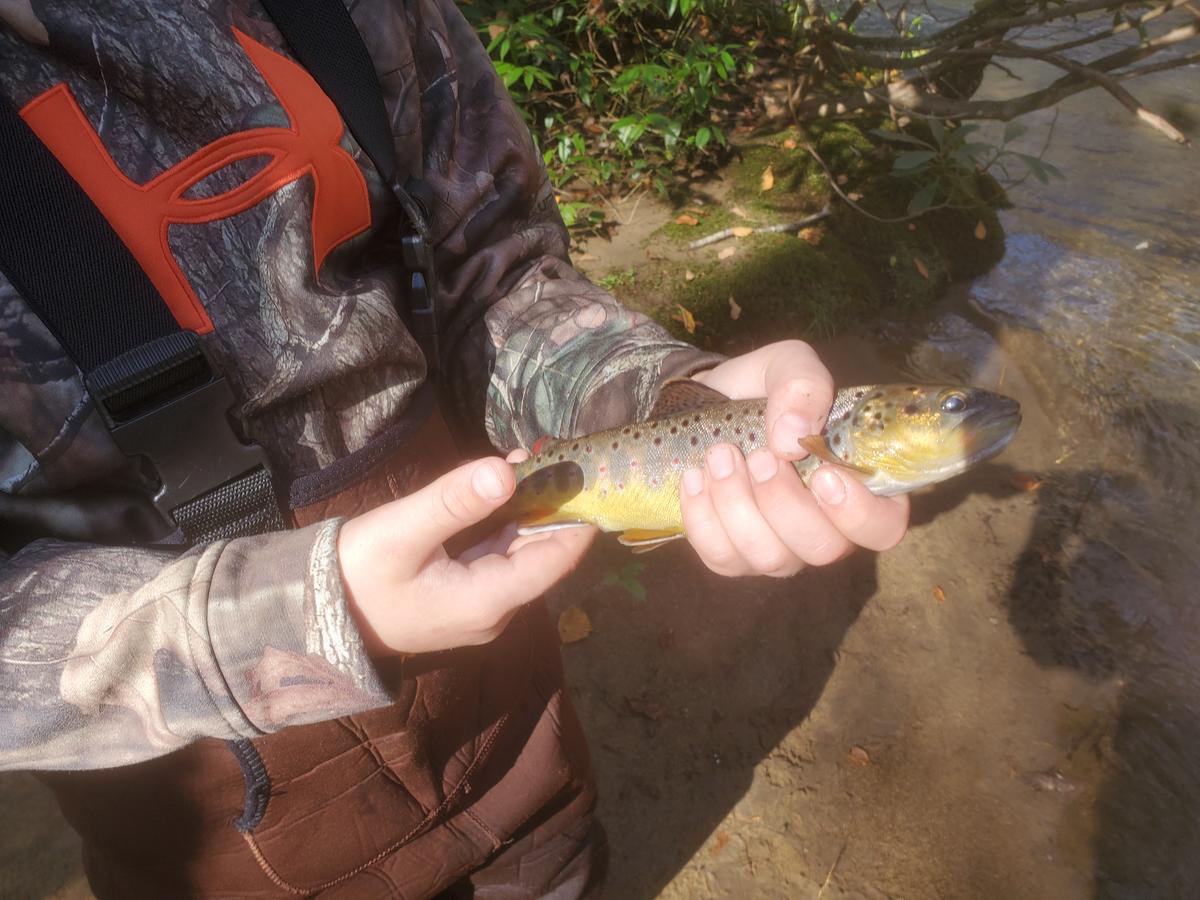
Be prepared for the weather. You will likely find cold or chilly mornings, warming to moderate or even warm afternoons (not so much in late November and December.) Therefore, you will want to be able to adjust your clothing to match the weather throughout the day. Also, this time of year can have some substantial rain, or even just hours of overcast skies and drizzle. Bring rain gear, and check the USGS streamflow data for the river nearest where you will be fishing. High water can make fishing very difficult or even impossible or dangerous. Also, on my most recent trip, US 441 was closed at Smokemont briefly, probably due to weather related debris in the road. Another trip a couple of years ago was immediately after the major fires in the park, and much of it was inaccessible due to road closures. So, you want to also check the park's road closures before heading out.
Be ready for wildlife. Drive safely, to avoid hitting an animal or sightseers. This is especially true for the Oconaluftee Visitor Center area where the elk herd is often seen, as well as the Cades Cove loop. Also, be careful not to get too close to the wildlife. I barely missed meeting a couple of bears at the Abrams Falls parking area at the end of Cades Cove one time. We actually had spotted them in a nearby tree prior to our parking, only to find that they had just crossed the parking lot. Be especially careful fishing the lower portion of the Oconaluftee. Tangling with a giant elk will end your trip in an unpleasant manner.
The late fall in the Smoky Mountains National Park offers the trout fisherman a chance to catch trout, enjoy the wildlife, and relax in the quiet afforded by this time of year.
